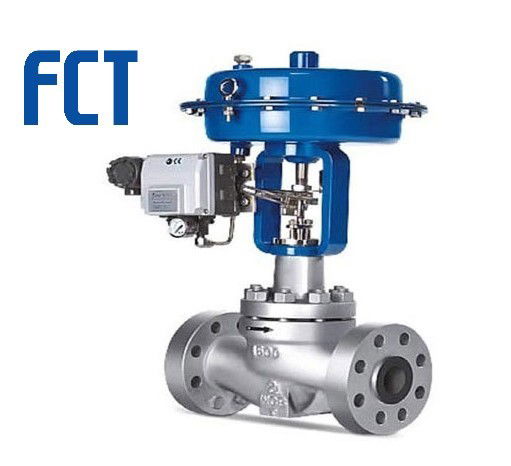Optimizing System Control with High-Performance Control Valves
Wiki Article

Maximize Energy Savings and Comfort With Advanced Building Automation Controls
In the realm of contemporary style and center monitoring, the combination of sophisticated structure automation controls stands as a critical advancement. By harnessing the power of automation, buildings can adjust, react, and advance in methods that were as soon as unbelievable.Power Effectiveness Advantages
Energy performance benefits can dramatically minimize energy intake and functional costs in buildings. By applying energy-efficient practices and technologies, building owners and operators can accomplish significant financial savings while also adding to environmental sustainability. Among the primary advantages of enhancing power efficiency in buildings is the decrease of utility bills. Energy-efficient systems, such as sophisticated building automation controls, can enhance using resources like illumination, cooling, and heating, leading to lower energy costs gradually.Furthermore, improved energy effectiveness can extend the life-span of structure devices and systems. By running extra successfully, HVAC systems, lighting components, and other structure components experience much less deterioration, resulting in minimized maintenance and substitute expenses. In addition, energy-efficient buildings typically command greater residential or commercial property values and rental prices, giving long-term economic advantages to owners.
In addition, power performance can boost owner comfort and productivity. Effectively managed indoor atmospheres with optimal lights and thermal conditions develop a more conducive and positive work space, resulting in improved worker complete satisfaction and efficiency. On the whole, the energy effectiveness advantages connected with innovative structure automation controls are diverse, including cost savings, ecological stewardship, and resident health.
Boosted Comfort Control
Enhancing comfort control in building settings needs a sophisticated integration of sophisticated automation systems for optimal owner well-being. By using advanced structure automation controls, centers can customize the interior atmosphere to satisfy the certain requirements and choices of owners. control valves.By incorporating these sophisticated controls, structures can not just boost convenience yet also improve energy effectiveness by optimizing system procedures based on real tenancy and usage patterns. Inevitably, focusing on resident convenience via sophisticated automation systems leads to a more enjoyable and much healthier interior atmosphere.
Functional Performance Improvements

Furthermore, the implementation of real-time surveillance and analytics devices makes it possible for building operators to identify energy inefficiencies and operational anomalies quickly. By continually keeping an eye on power use patterns and system performance metrics, adjustments can be made in real-time to optimize energy consumption and make certain peak operational performance. control valves. Furthermore, integrating need response methods into building automation controls can further enhance operational performance by dynamically readjusting power use based upon grid problems and rates signals
Indoor Climate Optimization
Reliable indoor climate optimization is a fundamental facet of structure automation controls, ensuring residents' comfort and wellness while maximizing power cost savings. By utilizing innovative sensing units and controls, constructing automation systems can constantly keep track of and adjust temperature level, moisture degrees, air high quality, and air flow to produce an optimum interior setting. Keeping comfortable and regular problems not only improves occupant satisfaction yet additionally enhances performance and total wellness.Indoor climate optimization likewise plays a crucial role in power efficiency. By fine-tuning home heating, cooling, and air flow systems based on real-time data and occupancy patterns, building automation controls can dramatically minimize energy usage - control valves. Implementing approaches such as demand-controlled ventilation and thermal zoning can assist lessen energy waste while guaranteeing that each area of the structure obtains the essential conditioning.

Sustainable Environment Development
Structure automation manages not just optimize indoor learn this here now environment problems for energy efficiency and resident convenience however also lay the foundation for creating a lasting atmosphere with calculated monitoring of systems and resources. By incorporating innovative structure automation modern technologies, such as sensing units, actuators, and smart software application, centers can change and keep track of power usage in real-time to lessen waste and minimize their carbon impact. These systems make it possible for predictive maintenance, recognizing visit this site right here possible concerns before they intensify and optimizing equipment efficiency to enhance long life and efficiency.Additionally, sustainable setting creation extends past energy administration to encompass water conservation, waste decrease, and indoor air top quality enhancement. Building automation controls can regulate water usage, spot leakages, and make sure proper garbage disposal practices, adding to overall sustainability initiatives. Furthermore, by monitoring and managing air flow and purification systems, these modern technologies boost passenger health and efficiency while reducing power consumption related to heating and cooling operations.
Final Thought
In conclusion, advanced building automation manages deal substantial advantages in regards to energy cost savings, comfort control, functional efficiency, indoor environment optimization, and creating a sustainable setting. By carrying out these controls, buildings can achieve optimal performance while decreasing energy intake and enhancing owner convenience. It is noticeable that the usage of innovative automation modern technology is vital in improving structure efficiency and developing an extra lasting future.Power effectiveness advantages can dramatically minimize power consumption and functional prices in structures. On the whole, the power performance advantages associated with innovative building automation controls are multifaceted, incorporating price savings, ecological stewardship, and occupant health.
Furthermore, including demand feedback techniques into building automation controls can additionally enhance operational efficiency by dynamically readjusting power usage based on grid problems and prices signals.
Structure automation regulates not just enhance indoor environment problems for energy efficiency and occupant convenience however also lay the foundation for producing a sustainable atmosphere with strategic monitoring of systems and sources.In like it conclusion, progressed building automation manages deal substantial advantages in terms of energy savings, comfort control, functional performance, indoor climate optimization, and producing a sustainable environment.
Report this wiki page